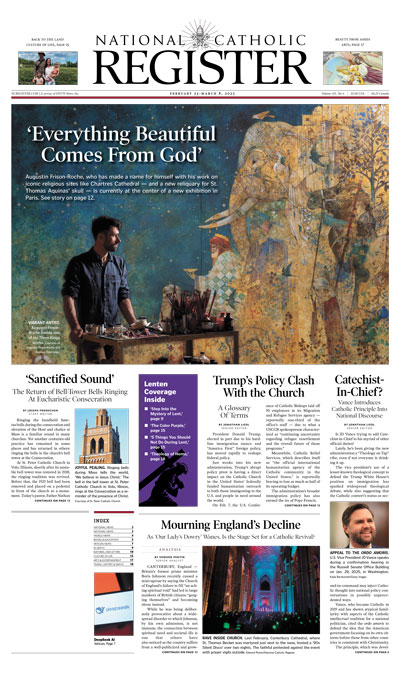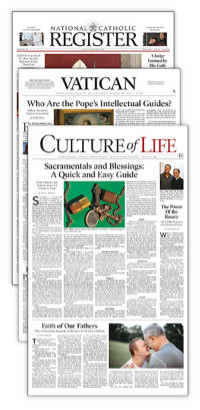Do You Live in Resurrection Mode?
User’s Guide to Easter Sunday

Sunday, March 31, is the Resurrection of the Lord. Mass readings: Acts 10:34a, 37-43, Ps 118:1-2, 16-17, 22-23; Colossians 3:1-4 or I Corinthians 5:6b-8; John 20:1-9.
Like most of the Resurrection accounts, St. John’s version paints a portrait of a journey that some of the early disciples have to make: out of fear and into faith. It shows the need to experience the Resurrection and then come to understand it more deeply. While the Gospel account begins with Mary Magdalene, the focus quickly shifts to St. John. Let’s study his journey, which is also ours.
The Gospel begins by describing everyone as running about. Mary Magdalene came to the tomb in the early morning darkness and saw the stone removed from the tomb. So she ran and went to Simon Peter and John. Though Mary Magdalene is looking at direct evidence of the Resurrection, she presumes the worst: that grave robbers have snatched the Lord’s body! It doesn’t even occur to her to remember that Jesus said that he would rise on the third day. She is in reaction mode instead of reflection mode. Do we live lives that are reactive and negative, or do we live reflectively, remembering that the Lord says that even our burdens are gifts in strange packages?
“All things work together for good to them that love God, to them who are the called according to his purpose” (Romans 8:28). The text goes on to describe a subtle move in John from reaction to reflection. As Peter and John run to the tomb, John ran faster and arrived before Peter. Scripture says, “But those who hope in the Lord will renew their strength. … They will run and not grow weary” (Isaiah 40:31). Perhaps John runs faster because he begins to move from reaction to reflection and remembrance; he is exhilarated by hope. Something has started to happen inside John.
The text says, “When Simon Peter arrived after him, he went into the tomb and saw the burial cloths [lying] there, and the cloth that had covered his head, not with the burial cloths but rolled up in a separate place.” The Greek text describes the clothes as keimena — lying, stretched out in place; as if the clothes simply “deflated” in place when the body they covered disappeared. The most expensive cloth of all, the soudarion, also lies folded in a separate place. Grave robbers would not leave valuable linens behind all stretched out in an orderly way; they snatch things and leave disarray in their wake. As we shall see, John is reassessing this evidence; it’s not robbers — it’s resurrection.
Next, John enters the tomb, and the text says that “he saw and believed.” Believed what? He sees the evidence and now believes that Jesus is risen. Yet the text also adds, “they did not yet understand the Scripture that he had to rise from the dead.” It is as if to say that John came to believe that Jesus had risen but had not yet come to fully understand all the scriptural connections of how this had to be. John has gone from fear to faith.
St. John leaves this scene as a believer. His faith may not be the fully perfected faith that it will become, but he does believe. John has gone from fear to faith, from reaction to reflection, from panic to peace. Happy Easter!















